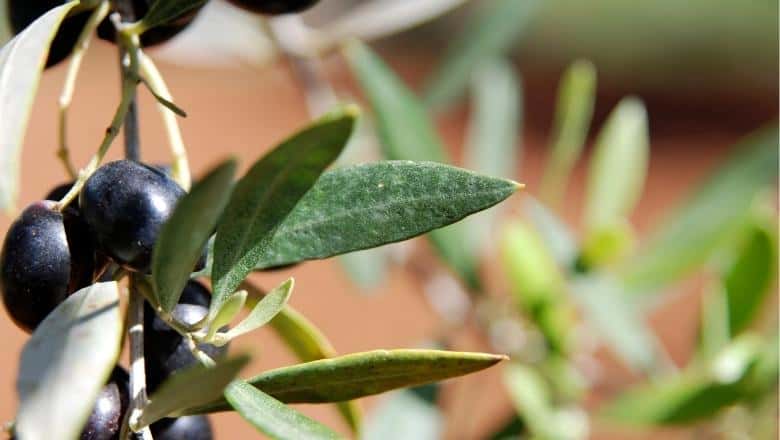How To Cure Brown and Curled Leaves on Olive Trees?
Olive Knowledge is a part of Amazon Associates. As an Amazon Associate, we earn from qualifying purchases. Read our Affiliate Disclosure to learn more.
I hate when the leaves on my trees become brown and curled. Even though it happens rarely because I try to take care of my olive trees as much as possible, I always make sure to cure it as quickly as possible, so there isn’t any effect on the fruit.
Here, I’ll show you all the steps you should take to cure brown and curled leaves on your olive trees.
Key Takeaways:
- Overwatering or underwatering can cause olive leaves to curl and turn brown.
- Insufficient light slows olive tree processes, leading to excess moisture and leaf browning.
- Pests like aphids and mites weaken leaves by robbing nutrients, causing curling and browning.
- Weeds deplete nutrients; herbicides or mulching can control and prevent olive tree leaves from browning and curling.
- Overuse of chemicals and fertilizers leads to leaf browning and curling; proper dosage is crucial.
Steps To Cure Brown and Curled Leaves

The following steps can be used to cure curled and brown leaves of olive trees.
1. Watering Tips for Healthy Leaves
The leaves of your olive tree may curl and turn brown if you overwater or underwater it. When an olive tree is overwatered, the roots draw the water up to the tree’s trunk. One by one, the tree cells fill up and make an effort to transfer the liquid to the following cell.
Until the moisture reaches the cells at the end of the line in the olive leaves, this water flow functions flawlessly. Since there is nowhere for the excess moisture to go, these cells continue to expand until they rupture, giving the margins of the olive leaves crusty brown points.
A thriving colony of nasty fungus gnats and other parasites may thrive on olive tree root rot, which is typically caused by chronic overwatering.
Additionally, the browning of olive tree leaf tips due to underwatering is a regular occurrence when lost water cannot be restored for any reason.
Water usually travels from the olive tree roots via the stems and water canals to the leaf tips last. However, if water supplies are scarce, other tree sections are prioritized. Olive leaf tip cells suffer as a result and pass away from a type of drought. Due to seasonal changes, random olive tree leaves become dark and drop off, especially before winter.
2. Providing Trees With Enough Sunlight
The olive tree will slow down all of its operations if it receives less light than it needs to survive. The olive tree wouldn’t consume water as quickly as it would if it were in ideal lighting circumstances, which would cause an excess of moisture that will cause olive leaves to alter, including browning and curling. Make certain that your olive tree receives enough light.
3. Dealing with Plant Pests
Aphids, spiders, scale, mealybugs, or mite infestations are some other insect pests that can cause the curling and browning of leaves. Insects can rob the leaves of their nutrition, weakening them. Due to the lack of vital nutrients the plant requires to grow, healthy leaves will curl up and die. Since the tree cannot adequately photosynthesize, it is not a good thing.
Related: How To Protect Olive Trees From Pests
The use of natural pesticides, such as salty water or cotton soaked in alcohol on the olive tree, is the best remedy. If you opt to use stronger insecticides, ensure they have less chemical content to minimize further damage to the plant. However, be careful not to misuse them as some insects may eventually acquire a tolerance to them and stop responding to them.
4. Weed Management for Healthy Plants
Weeds may grow in any environment. Your plants may become ill as a result of losing vital nutrients. Since the weeds may spread so widely, it can be an issue if you have a sizable olive tree plantation. Excess water can generally encourage weed development, which is not good for your plants.
Your garden will benefit greatly from the application of herbicides or weed killers. Just remember to use them as soon as you notice new weed growth. It only takes a few days for them to blanket the region completely; thus, getting rid of them as soon as possible is preferable.
One of the most natural ways to fight weeds in your olive grove is to mulch olive trees. So make sure to learn how to do it and do it on a regular basis when it’s needed.
5. Using Chemicals and Fertilizers Wisely
Browning leaf tips of an olive tree may indicate overfertilization of the tree or a buildup of fertilizer salts in the soil. In order to treat it, you must know when to fertilize olive trees and then use only the suggested amount of whatever product you use. It is preferable to use a slow-release fertilizer.
The leaves may curl if too many chemicals, such as pesticides and herbicides, are used. It’s because these compounds, which might be harmful to the crop, can be absorbed by the leaves. To keep your plant from being killed by these toxins, it’s important to use the proper dosage.
Related: Best Olive Tree Fertilizers
The use of natural pesticides and herbicides by farmers is widespread. Choosing a more natural approach to weeding and bug control is preferable. If your plant is already overdone, chemicals won’t be appropriate.
6. Preventing Verticillium Wilt
Verticillium wilt is another potential reason for browning and curling olive tree leaves. It happens if the soil’s drainage system is inadequate. Additionally, it could happen if the olive trees are overwatered. Lack of oxygen will cause the plant’s roots to suffocate, which can lead to verticillium wilt infection.
The best method of treating verticillium wilt is prevention. Since this fungal infection dwells in the soil itself, it’s not as simple as it seems. Making your olive tree robust enough to resist contracting this disease is the best course of action. Being more fungal-resistant will be beneficial.
Quick Tips for Preventing Olive Tree Leaves from Turning Brown and Curled Up

Basic conditions for olive tree maintenance should be observed:
- Give your olive tree at least 6 hours of direct sunlight each day.
- It needs weekly or biweekly normal watering.
- Make sure there is a dry time between waterings.
- Verify that the olive tree has enough drainage.
- Fertilize consistently every several months.
- Test the soil annually and add any nutrients that are deficient.
Final Thoughts
If there are only a few alarming leaves on your olive tree, it can just be a natural growth cycle with the leaves dying, becoming brown, and dropping off. You don’t need to be concerned at all in this situation. However, it is advised that you take the essential actions to preserve your olive tree alive and healthy if plenty of leaves are brown and curled.
Similar Posts:
